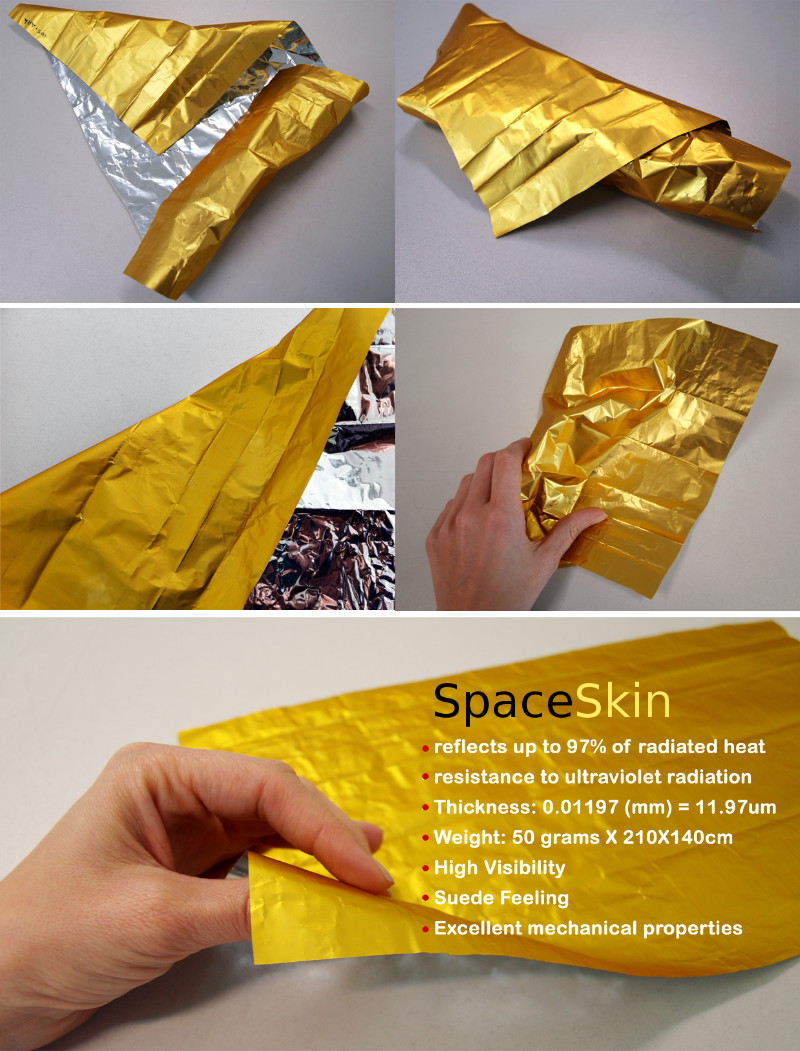SpaceSkin is an extremely lightweight, ultra-thin mylar membrane, also called "Space blanket", treated aith a special polymeric coating that adds great strenght and durability to it.
First developed by NASA in 1964 for the US space program, the Space blanket consists of a thin sheet of plastic (often PET film) that is coated with a metallic reflecting agent, making it metalized polyethylene terephthalate (MPET), usually gold or silver in color, which refletcs up to 97% of radiated heat.
For use in space, polyimide substrate is usually employed due to its resistance to the hostile space environment, large temperature range (cryogenic to -260° C and for short excursions up to over 480° C), low outgassing (making it suitabler for vacuum use) and resistance to ultraviolet radiation. Aluminized kapton, with foil thickness of 50 and 125um, was used e.g. on the Apollo Lunar Module. The polyimide gives the foils their distinctive amber-gold color.
With the addition of a polymeric substrate the blanket acquires a great mechanical resistance and strenght. In addition to this its hand touch sensation begins more soft, like suede feeling.
